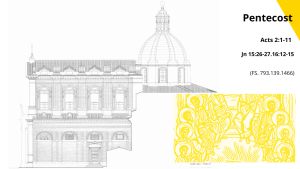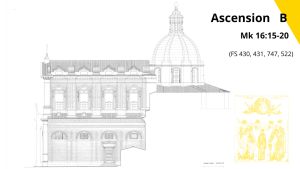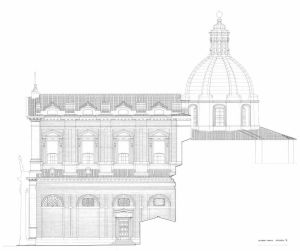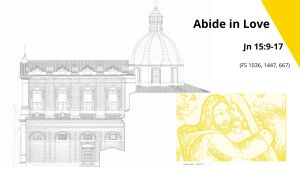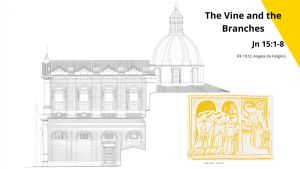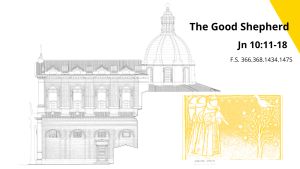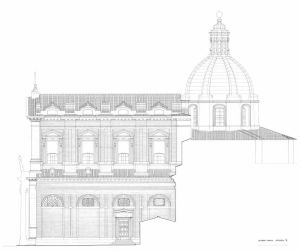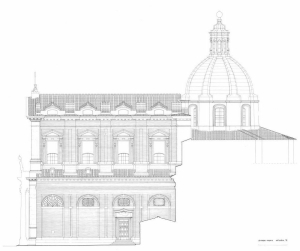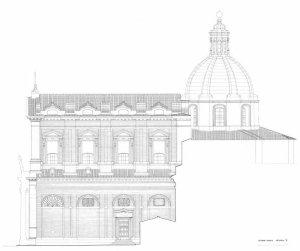
don Giuseppe Nespeca
Giuseppe Nespeca è architetto e sacerdote. Cultore della Sacra scrittura è autore della raccolta "Due Fuochi due Vie - Religione e Fede, Vangeli e Tao"; coautore del libro "Dialogo e Solstizio".
Franciscan Pentecost
Ascension of the Lord B
CREATIVE PROCESS, ordinary and extraordinary: genius; talent; intelligence; receptivity; immersion and general sensitivity; vital environment (by Francesco Giovannozzi, psychologist and psychotherapist)
A few days ago, I visited the workshop of a craftsman in the travertine area and was enthralled by this gentleman's workmanship. He created, in my opinion, small masterpieces.
Of course, there are many beautiful and great things in the world in all fields: from great works, to painting, to poetry, to scientific discoveries. It is superfluous to list them. They are known, they are admired - and will be in the future.
But often in our everyday life we can find, discover small works produced, created by unknown people. The Treccani dictionary defines creativity as 'creative virtue', the ability to create with intellect, imagination, inventiveness.
On this occasion, I went to dust off an old book of mine by Silvano Arieti - 'Creatività sintesi magica' - Il pensiero scientifico editore. This psychiatrist and psychoanalyst gives a beautiful definition: 'Creativity, a human prerogative, can be seen as the humble human counterpart of divine creation' (p. 3). While the Creator moulded all things from nothing, human creativity uses what already exists to change it.
The author then speaks of ordinary creativity, and extraordinary creativity. It is about different levels of creativity, not the creativity of great works or of great men of letters [think of the Divine Comedy or the great monuments, the wonders of the world] but the small works of us ordinary men who sometimes manage to mould what we have into something stupendous.
We improve our self-confidence, we feel satisfaction, we believe in ourselves more - and this motivates us to work better. Arieti goes on to say that ordinary creativity must not make us forget and neglect extraordinary creativity. While 'the ordinary raises man's morale and eliminates or diminishes neurosis, the extraordinary is responsible for mankind's great achievements and social progress' (p. 11).
Later in the book, Arieti quotes Nathaniel Hirsh, who in his 1931 work 'Genius and Creative Intelligence' examined the difference between talent and genius.
He wrote (pp. 288-289): '[...] the genius creates, the man of talent determines improvements; the genius intuits, the man of talent analyses and explores: the genius aspires, the purpose of his life is creativity; the man of talent is animated by ambition and the purpose of his life is power; the genius is always a stranger in a strange land; men of talent are those for whom the earth is a paradise and social adaptation a natural vocation'.
Personally, I have wondered whether creativity, be it big or small, is related to intelligence. Many authors have made studies in this sense. The author claims that there is still no consensus. It seems, however, that highly intelligent people are not necessarily creative. A high IQ can limit inwardness by the presence of strong self-criticism.
Getzel and Jackson studied two groups of children: one group with high intelligence but no corresponding IQ and the other group with high creativity but no corresponding IQ. Comparing the results despite a difference in the IQ scores of the two groups, there was no measurable difference in academic performance.
Other authors have tried to study the psychological qualities of creative people.
According to Mary Henle's studies, a decisive property is receptivity: that is to say, rather than looking for ideas, we must be careful to receive them.
Another peculiarity is the 'immersion' in the material - to get more information, but also to know the difficulties.
For Guilford, a general sensitivity to things is also important.
Some societies fostered creativity, while others inhibited it. Although the creative process is an intrapsychic phenomenon, it is largely facilitated by a suitable environment.
I remember when I was a student I was amazed after a lecture where the lecturer stated that a person with qualities or genius, if he or she did not have fertile ground, would hardly emerge. I was convinced that a person of genius emerged in any case.
Using an allegory, a beautiful flower can grow well if it is born in inaccessible soil and lacks the necessary care, and if it does, who knows if anyone will notice its splendour.
Francesco Giovannozzi psychologist-psychotherapist
Vine and Branches
Good Shepherd People
HELP OR COMPETITION? REFLECTIONS ON ARTIFICIAL INTELLIGENCE (by Francesco Giovannozzi, psychologist and psychotherapist)
For some time now, I have been hearing about artificial intelligence in the media. I learn that it is a branch of computer science whose aim is to build machines capable of working, of having performance similar to that of man. A few days ago I heard that an ancient manuscript was translated thanks to artificial intelligence.
I know that the idea of making machines capable of reproducing human intelligence has always attracted us since ancient times.
Kerenyi in the myths of Greece tells us about the figure of Talos of Crete. He was a living statue, a giant invulnerable automaton, charged by Minos with guarding the island. The giant was invincible except at a point on his ankle where a vein was visible. Legend has it that he was killed with an arrow that struck him in the weak spot. Another version says that he died from loss of blood, but not from an arrow, but because he had hit his ankle against a rock, after Medea had bewitched him with her magic arts.
Artificial intelligence: I do not know if it is more the advantages or the dangers. Perhaps in science or medicine it can be valuable, but in practical, everyday life, I fear dehumanisation.
Besides: what about jobs?
To give a trivial example, imagine when a robot will be served in a restaurant tomorrow? I think we all prefer a human being, with its merits, flaws, and ingenuity.
Or again, I heard on the news that artificial intelligence will be used in the field of psychology and psychotherapy.
Here my whole being revolts!
Psychology deals with the soul and psychotherapy is a form of help through interpersonal relationship. How can an automaton help a human being in inner suffering? What experience can it convey and communicate to the other?
It is not enough to give guidelines; the psychotherapist studies for years and in the case of analysis undergoes analysis himself in order to get to know his own unconscious and try to help the other person. But even when applying a test, the practitioner usually uses a computer to evaluate the statistical data, but it is still the same practitioner who evaluates the test according to his knowledge and the subject's history. Can an automaton do this?
I think that intellect is a human prerogative. There are animal behaviours that suggest purposeful activity, even if based on instinct.
The definition of intelligence has evolved over the years from a general ability to a cognitive competence combined with environmental, emotional and experiential components.
The first definition of it was given by Spermann who regarded it as a 'g-factor' - that is, a general abstract ability, above other abilities. It could be measured by tests and this made it scientific.
Then other theories of intelligence were developed: Thurstone hypothesised seven primary abilities, Guilford spoke of 120 primary and autonomous abilities, Cattell distinguished between fluid and crystallised intelligence. Fluid is the functional, innate structural part - i.e. the ability to grasp relationships between elements, independent of learning; crystallised intelligence arises from experience.
One type of intelligence that is much studied today is emotional intelligence. It consists of recognising and regulating one's emotional life.
This list is not exhaustive. I have only mentioned a few theories.
The one I personally like best is Jean Piaget's theory: the author speaks of 'assimilation and accommodation'. They accompany the life of an individual; more flexible in youth, more rigid in senescence.
Assimilation: we experience the outside world through patterns we already possess. An example of this is the infant with the sucking reflex, which allows him to explore his surroundings. Accommodation is the change of these schemata based on new experiences, which provide additional information. These two moments alternate in search of balance.
This balance causes the individual to organise a form of adaptation to the environment.
The two moments are almost always present in every human activity; sometimes assimilation prevails, sometimes accommodation. For example, when a child clenches his fist without holding anything in his hand or makes sucking movements without having anything in his mouth, it is assimilation that dominates; whereas accommodation predominates when, for example, a child imitates a gesture he has seen or attempts to bring his hand to his mouth. Or if a child picks up a pen, he has to perform different finger movements from when he picks up a ball. He mimics his gestures.
For Piaget, mental development begins with the sensorimotor period. Briefly, it is a phase from birth to about two years of age. From reflexes alone, it moves on to behaviour, to seeing the consequences on one's own body and then on objects in the outside world, discovering new effective actions to achieve a goal. At around eighteen months, representational activity appears: the child is able to imagine actions.
In the preconceptual phase [2-4 years] egocentrism prevails and language increases, but the child does not know how to switch from general to particular thinking.
From around the age of four to seven we have the phase of intuitive thinking. By kindergarten the child acquires new information, but there is still no reversibility. The latter consists of relating several actions to thought, and being able to reconstruct them in reverse.
In the phase of concrete operations, the agreement between actions grows. Thought moves from the particular to the general, and vice versa; but one is still bound to actions.
In the formal operations phase [from about eleven to fourteen years], deductive hypothetical reasoning allows one to make hypotheses. The pre-adolescent begins to think about his future, and reflects on the values of his cultural environment.
This brief outline is neither complete nor exhaustive. The 'Piagetian' theory is much more articulate. In addition to Piaget's theory, there were Wygotsky and Bruner, who had their own views.
Taking into account these little pieces of data on human development, reminiscent of university studies, I asked myself: will artificial intelligence be able to find an accommodation to better adapt itself? Will it be able to find new solutions? Or will it only make use of the moment of assimilation? And above all: will it be a help, or will it compete with the human being?
Francesco Giovannozzi, psychologist-psychotherapist.
The beaten path, and the path for us
True morality does not consist in following the beaten path, but in finding the true path for us and following it without fear.
(Gandhi)
THE HUMANISING THEME OF THE BIRTH: 25 March the Annunciation - 25 December the Birth (by Francesco Giovannozzi, psychologist and psychotherapist)
Christmas, par excellence the cross-cultural feast of the Birth, is approaching.
Last Christmas I already made a small reflection on the psychological meaning of Christmas. In this little article I would like to approach the topic in a different way.
Pregnancy, birth and childhood are a continuum.
Some psychologists of the unconscious claim that psychic life even begins during pregnancy.
I report some experiences of analysts from the book 'The origin of fear - the myths of Mesopotamia and the trauma of birth' by Franz Renggli [Ed. Magi. (Jan. 2004)].
These experiences reported in the book help to understand the psychic life of the one about to be born.
On p. 29, the author quotes an animal story by William Emerson.
"A tractor-trailer had run over a pregnant bitch. Both mother and puppy survived. After its birth, it was taken to a farm where it was noted for its fearful attitude.
In particular, it reacted nervously to the cawing of geese in the spring when they migrated north - and in the autumn when they returned. On these occasions he would gasp and hide in a barn.
It should be added that the driver of the lorry had tried to avoid the accident by honking his horn, the acoustic effect of which was similar to the cry of the geese.
It is evident that the old prenatal trauma, linked to great pain and fear of death, was awakened in this puppy by the passing of the geese."
In this chapter of the book, the author relates another story by Thomas Verny from his book 'Secret Life Before Birth' (1981):
"A conductor during the first performance of a composition knew in advance, before turning the pages of the score, the parts entrusted to the cello. When he told his mother, a cellist by profession, the secret was soon revealed: during her pregnancy, she had rehearsed those very passages on the cello'.
The author also reports on research conducted by David Chamberlain. He subjected some babies with speech to hypnosis, asking them about their birth experience. He did the same with mothers - and comparing, their stories coincided.
"These babies described their birth from the inside, the anxiety that gripped them during labour, but also their worries and the empathy that united them with their mother during the birth".
Alessandra Piontelli's observations are also interesting (p.31)
This psychoanalyst made observations during the pregnancy period and her knowledge of the prenatal period was enriched.
In the above-mentioned book (p.32), a case is reported of a mother who ate continuously during pregnancy despite doctors' advice to the contrary.
The unborn child was equally insatiable, constantly sucking her thumb and placenta; her tongue was always moving, and she swallowed large quantities of amniotic fluid.
Another example described is that of a mother with a high level of anxiety because she had already lost a baby,
Every time the doctors told her something, she became anxious and immediately thought about what harm the unborn child might suffer.
The foetus consequently hid behind its arms and behind its legs, so that during medical examinations with ultrasounds the head could not be clearly distinguished. As anxious as the mother.
On p.33 of the book, a study by David Chamberlain is cited.
Whenever mothers want to know whether their unborn child is nomal, they undergo amniocentesis: Chamberlain reports that one foetus retracted and then hit the needle with his fist; others stiffened, and their heart beat faster. Breathing may slow down for a few days.
Generally, unborn children are not so frightened of the needle, unless it is a vital issue and they perceive a danger.
In my professional experience I have also come across painful experiences that were related to the gestational period.
The collection of the anamnesis was largely centred on the period of conception and what life had been like for the parents during the wait, as well as the personal history of the baby.
The parents' experience highlighted the acceptance or non-acceptance of the baby, sometimes any unwanted marriages, or the stories of mothers and fathers who were still themselves 'babies': incapable of 'caring', a typical aspect of the parental function.
Of course then the child is born, but it will live better if supported by positive and loving feelings. He will have more strength to face life's difficulties.
So let us live Christmas with joy, even if there are people who live it badly.
Christmas represents and conveys the theme of birth.
It is true that Christmas is the birth of the Child Jesus, but it is also the feast of any birth. I wonder what person does not feel a special joy within him or herself when a child comes into the world (Christian or not).
I personally think that the feast of Christmas excludes no one,
And I would like it to continue to be called that, not a winter festival as suggested by authoritative voices.
Francesco Giovannozzi psychologist - psychotherapist.
IL TEMA UMANIZZANTE DELLA NASCITA: 25 Marzo l’Annunciazione - 25 Dicembre la Nascita (di Francesco Giovannozzi, psicologo e psicoterapeuta)
Si avvicina il Natale, per eccellenza la festa transculturale della Nascita.
Lo scorso Natale ho già fatto un piccola riflessione sul significato psicologico dl Natale. In questo articoletto vorrei affrontare l’argomento in modo diverso.
Gravidanza, nascita e infanzia sono un continuum.
Alcuni psicologi dell’inconscio sostengono che la vita psichica ha inizio addirittura durante la gravidanza.
Riporto alcune esperienze di analisti tratte dal libro «L’origine della paura - i miti della Mesopotamia e il trauma della nascita» di Franz Renggli [Ed. Magi. (gen. 2004)].
Queste esperienze riportate nel libro aiutano a comprendere la vita psichica di colui che sta per nascere.
L’autore cita a pag. 29 una storia di animali di William Emerson.
“Una motrice da rimorchio aveva investito una cagna gravida. Sopravvissero sia la madre che il cucciolo. Dopo la nascita ,esso fu portato in una fattoria dove si distinse per il suo atteggiamento pauroso.
In particolare reagiva nervosamente al gracidio delle oche nel periodo primaverile quando queste migravano verso nord - e in autunno, quando facevano ritorno. In queste occasioni sussultava e si nascondeva in un granaio.
Occorre aggiungere che il conducente dell’autocarro aveva cercato di evitare l’incidente suonando il clacson, il cui effetto acustico era simile al grido delle oche.
E’ evidente che il vecchio trauma prenatale, legato ad un grande dolore e alla paura della morte, veniva risvegliato in questo cucciolo dal passaggio delle oche.”
In questo capitolo del libro l’autore riporta un’altra storia di Thomas Verny tratta dal suo libro «Vita segreta prima della nascita» (1981):
“Un direttore d’orchestra durante la prima esecuzione di una composizione, conosceva in anticipo, prima di voltar le pagine della partitura, le parti affidate al violoncello. Quando lo raccontò alla madre violoncellista di professione, il segreto fu presto svelato: durante la gravidanza, lei aveva provato al violoncello proprio quei passaggi”.
L’autore riporta anche delle ricerche condotte da David Chamberlain. Egli ha sottoposto ad ipnosi alcuni bimbi con linguaggio, chiedendo loro l’esperienza della nascita. Ha fatto lo stesso con madri - e confrontando,i loro racconti coincidevano.
“Questi bambini descrivono la loro nascita dall’interno, l’ansia che li ha colti durante le doglie, ma anche le loro preoccupazioni e l'empatia che li univa alla madre durante il parto”.
Interessanti sono anche le osservazioni di Alessandra Piontelli (p.31)
Questa psicoanalista ha effettuato delle osservazioni durante il periodo della gravidanza e le conoscenze sul periodo prenatale si sono arricchite.
Nel libro sopra citato (p.32) viene riportato il caso di una madre che in gravidanza mangiava in continuazione nonostante il parere contrario dei medici.
Il nascituro era altrettanto insaziabile, si succhiava continuamente il pollice e la placenta; la sua lingua era sempre in movimento, e ingeriva grandi quantità di liquido amniotico.
Un altro esempio descritto è quello di una madre con un elevato livello di ansia, perché aveva già perso un bambino,
Ogni volta che i medici le comunicavano qualcosa, andava in ansia e subito pensava a quale danno poteva andar incontro il nascituro.
Il feto di conseguenza si nascondeva dietro le braccia e dietro le gambe,in modo tale che durante gli esami medici con ultrasuoni non si distingueva chiaramente la testa. Ansioso come la madre.
A p.33 del libro viene citato uno studio effettuato da David Chamberlain.
Ogni volta che le madri vogliono sapere se il bambino che sta per nascere è nomale si sottopongono ad amniocentesi: Chamberlain riferisce che un feto si è ritratto per poi colpire con un pugno l’ago; altri si irrigidiscono, e il loro cuore batte più forte. Nonché la respirazione può rallentare per alcuni giorni.
Generalmente i nascituri non si spaventano tanto dell’ago, a meno che non sia una questione vitale e percepiscano un pericolo.
Anche nella mia esperienza professionale mi sono imbattuto in vissuti dolorosi che erano riconducibili al periodo gestazionale.
La raccolta dall’anamnesi era centrata ampiamente sul periodo del concepimento e di come era stata la vita dei genitori durante l’attesa,oltre che sulla storia personale del bimbo.
Il vissuto di genitori metteva in luce l’accettazione o meno del bimbo, talora eventuali matrimoni non voluti, ovvero vicende di madri e padri ancora loro stessi “bimbi”: incapaci di ‘prendersi cura’, aspetto tipico della funzione genitoriale.
Certo che poi il piccolo nasce, ma vivrà meglio se supportato da sentimenti positivi e amorevoli. Avrà più forza per affrontare le difficoltà della vita.
E allora viviamo con gioia il Natale, anche se ci sono persone che lo vivono male.
Natale rappresenta e tramanda il tema della nascita.
E vero che il Natale è la nascita del Bambino Gesù, ma è anche la festa di qualsiasi nascita. Mi chiedo quale persona non senta dentro di sé una particolare gioia, quando un bimbo viene al mondo (cristiani e non).
Personalmente penso che la festività del Natale non escluda nessuno,
E mi piacerebbe che si continuasse a chiamarlo così, non festa d’inverno come suggerito da voci autorevoli.
Francesco Giovannozzi psicologo - psicoterapeuta.
Who touched Lydia's heart? The answer is: «the Holy Spirit». It’s He who made this woman feel that Jesus was Lord; He made this woman feel that salvation was in Paul's words; He made this woman feel a testimony (Pope Francis)
Chi ha toccato il cuore di Lidia? La risposta è: «lo Spirito Santo». È lui che ha fatto sentire a questa donna che Gesù era il Signore; ha fatto sentire a questa donna che la salvezza era nelle parole di Paolo; ha fatto sentire a questa donna una testimonianza (Papa Francesco)
While he is about to entrust to the Apostles — which in fact means “envoys” — the mission of taking the Gospel to all the world, Jesus promises that they will not be alone. The Holy Spirit, the Counselor, will be with them, and will be beside them, moreover, will be within them, to protect and support them. Jesus returns to the Father but continues to accompany and teach his disciples through the gift of the Holy Spirit (Pope Francis)
Mentre sta per affidare agli Apostoli – che vuol dire appunto “inviati” – la missione di portare l’annuncio del Vangelo in tutto il mondo, Gesù promette che non rimarranno soli: sarà con loro lo Spirito Santo, il Paraclito, che si porrà accanto ad essi, anzi, sarà in essi, per difenderli e sostenerli. Gesù ritorna al Padre ma continua ad accompagnare e ammaestrare i suoi discepoli mediante il dono dello Spirito Santo (Papa Francesco)
Jesus who is the teacher of love, who liked to talk about love so much, in this Gospel speaks of hate. Exactly of hate. But he liked to call things by the proper name they have (Pope Francis)
Gesù che è maestro dell’amore, al quale piaceva tanto parlare di amore, in questo Vangelo parla di odio. Proprio di odio. Ma a lui piaceva chiamare le cose con il nome proprio che hanno (Papa Francesco)
St Thomas Aquinas says this very succinctly when he writes: "The New Law is the grace of the Holy Spirit" (Summa Theologiae, I-IIae, q.106 a. 1). The New Law is not another commandment more difficult than the others: the New Law is a gift, the New Law is the presence of the Holy Spirit [Pope Benedict]
San Tommaso d’Aquino lo dice in modo molto preciso quando scrive: “La nuova legge è la grazia dello Spirito Santo” (Summa theologiae, I-IIae, q. 106, a. 1). La nuova legge non è un altro comando più difficile degli altri: la nuova legge è un dono, la nuova legge è la presenza dello Spirito Santo [Papa Benedetto]
Even after seeing his people's repeated unfaithfulness to the covenant, this God is still willing to offer his love, creating in man a new heart (John Paul II)
Anche dopo aver registrato nel suo popolo una ripetuta infedeltà all’alleanza, questo Dio è disposto ancora ad offrire il proprio amore, creando nell’uomo un cuore nuovo (Giovanni Paolo II)
«Abide in me, and I in you» (v. 4). This abiding is not a question of abiding passively, of “slumbering” in the Lord, letting oneself be lulled by life [Pope Francis]
«Rimanete in me e io in voi» (v. 4). Questo rimanere non è un rimanere passivo, un “addormentarsi” nel Signore, lasciandosi cullare dalla vita [Papa Francesco]
سَلامي أُعطيكُم – My peace I give to you! (Jn 14:27). This is the true revolution brought by Christ: that of love […] You will come to know inconceivable joy and fulfilment! To answer Christ’s call to each of us: that is the secret of true peace (Pope Benedict)
سَلامي أُعطيكُم [Vi do la mia pace!]. Qui è la vera rivoluzione portata da Cristo, quella dell'amore [...] Conoscerete una gioia ed una pienezza insospettate! Rispondere alla vocazione di Cristo su di sé: qui sta il segreto della vera pace (Papa Benedetto)
duevie.art
don Giuseppe Nespeca
Tel. 333-1329741
Disclaimer
Questo blog non rappresenta una testata giornalistica in quanto viene aggiornato senza alcuna periodicità. Non può pertanto considerarsi un prodotto editoriale ai sensi della legge N°62 del 07/03/2001.
Le immagini sono tratte da internet, ma se il loro uso violasse diritti d'autore, lo si comunichi all'autore del blog che provvederà alla loro pronta rimozione.
L'autore dichiara di non essere responsabile dei commenti lasciati nei post. Eventuali commenti dei lettori, lesivi dell'immagine o dell'onorabilità di persone terze, il cui contenuto fosse ritenuto non idoneo alla pubblicazione verranno insindacabilmente rimossi.


